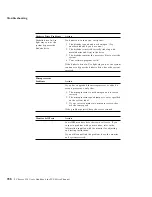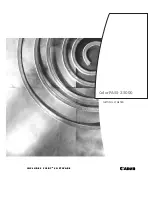
Configuration Conflicts
3. Press Enter.
4. Make your changes.
5. When you are done, press F10 to update the file with the
changes you made, or press Esc to quit the editing process
without saving the changes.
Note: Pressing F1 when inside the File Editor displays all of the
keyboard functions available to you while editing.
Configuration Conflicts
The Automatic Configuration program configures only the system
hardware. It does not consider the requirements of the operating
system or the application programs. For these reasons,
configuration conflicts might occur.
Resolving Memory-Address Conflicts
The Automatic Configuration program might change the
memory-address space used by some hardware options. If it does,
the new address might conflict with addresses defined for use
through expanded memory specification (EMS). (EMS is used only
with DOS.)
If a memory conflict exists, one or more of the following conditions
might exist:
The system cannot load the operating system.
The system does not work.
An application program does not operate, or it returns an error
message.
Screen messages indicate that a memory-address conflict exists.
You can resolve memory-address conflicts by changing either the
software or hardware configuration setup.
372
PC Server 520 User's Handbook for PCI/Micro Channel
Summary of Contents for PC Server 520
Page 1: ...PC Server 520 User s Handbook for PCI Micro Channel IBM...
Page 86: ...Installation Checklist 70 PC Server 520 User s Handbook for PCI Micro Channel...
Page 146: ...Using the Mini Configuration Program 130 PC Server 520 User s Handbook for PCI Micro Channel...
Page 190: ...Using the SCSISelect Utility Program 174 PC Server 520 User s Handbook for PCI Micro Channel...
Page 385: ...Installing Additional Test Programs 207 CMD 3 Chapter 7 Solving Problems 369...
Page 438: ...IBM Part Number 78H6336 Printed in U S A May 1996 78H6336...
















































